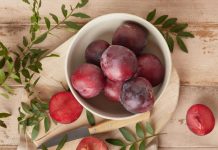
Did you know that what you eat can help the friendly bacteria living in your stomach?
These tiny friends, often called gut bacteria, need good food to grow and keep us healthy.
And it turns out, the best food for them might be found in everyday veggies and some cereals.
What’s Good for the Gut?
In a new study, scientists made a list of thousands of foods and how much of this special food, called prebiotics, they have.
Prebiotics are a type of fiber that you can find in many plants. They can’t be digested by our bodies, but the good bacteria in our stomach love them.
The scientists found that the top five foods packed with prebiotics are: dandelion greens, Jerusalem artichokes, garlic, leeks, and onions.
Besides feeding our gut bacteria, these foods also have a lot of fiber, something we often don’t eat enough of.
“Eating more of these foods can help your health,” says Cassandra Boyd, a student at San José State University who led the research.
“We can improve our gut health and get more fiber at the same time. And it might be easier than you think.”
Boyd shared these findings at a big nutrition meeting in Boston in July 2023.
The Power of Prebiotics
Don’t confuse prebiotics with probiotics. Probiotics are the live good bacteria themselves, while prebiotics are the food for these bacteria. They both help our gut health, but in different ways.
Eating more prebiotics can help control blood sugar levels, make it easier for the body to use minerals like calcium, and improve digestion and immune function.
Even though we don’t have official rules on how much prebiotics we should eat each day, a leading scientific group recommends about 5 grams.
What’s In Our Food?
For their study, the researchers used information from other studies to find out how much prebiotics are in 8,690 different foods. About 37% of the foods had prebiotics.
The five foods mentioned earlier had the most, from 100 to 240 milligrams per gram of food. Other foods with good amounts of prebiotics were onion rings, creamed onions, cowpeas, asparagus, and Kellogg’s All-Bran cereal.
“The early results show that onions and similar foods have different types of prebiotics, which makes them even better for our gut bacteria,” Boyd said.
“These foods are common in our diets, so it’s easy for us to eat more prebiotics.”
Boyd estimated that eating half of a small onion (about 4 ounces) would give you the recommended 5 grams of prebiotics.
Foods like wheat had less prebiotics. Dairy products, eggs, oils, and meats had little or none at all.
What’s Next?
The researchers hope their study will help other scientists understand how prebiotics affect our health and guide future food recommendations.
But they still need to find out how cooking changes the prebiotics in food and how foods with many ingredients affect our gut health.
So, next time you’re at the grocery store, maybe grab some extra onions or leeks. Your gut bacteria will thank you!
If you care about gut health, please read studies that green tea could boost gut health and lower blood sugar, and this diet could boost your gut health and weight loss.
For more information about health, please see recent studies about major cause of fatty liver disease, leaky gut, and results showing why a glass of red wine is good for your gut.
Follow us on Twitter for more articles about this topic.
Copyright © 2023 Knowridge Science Report. All rights reserved.



